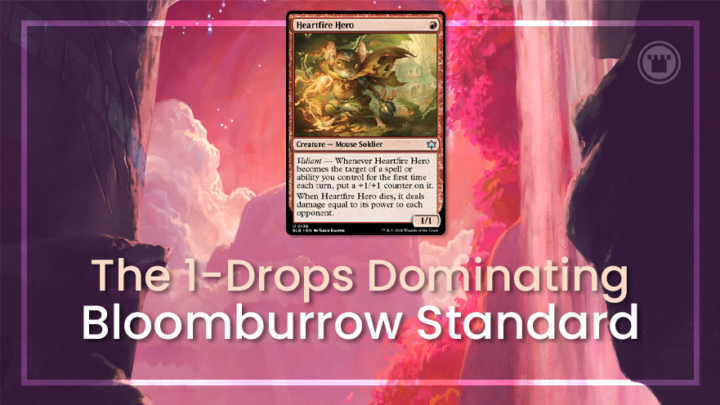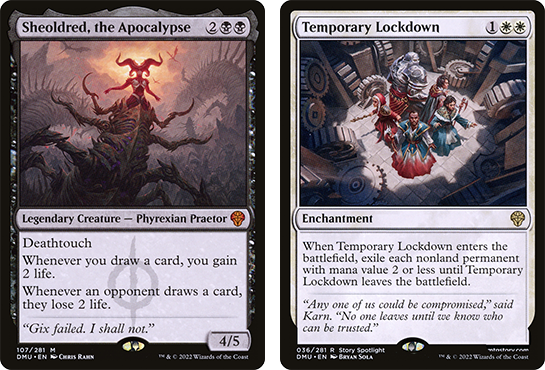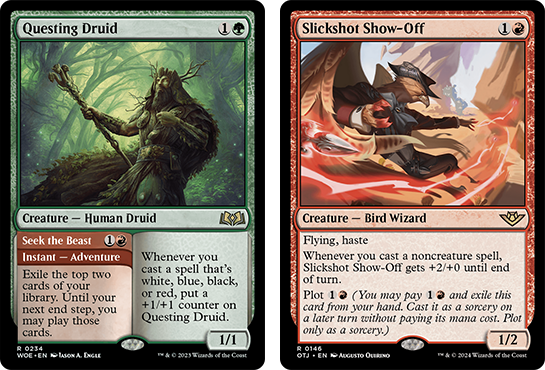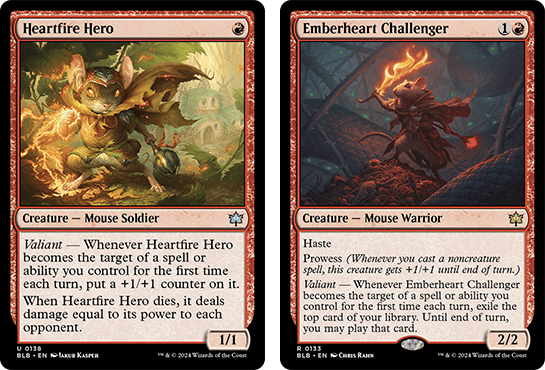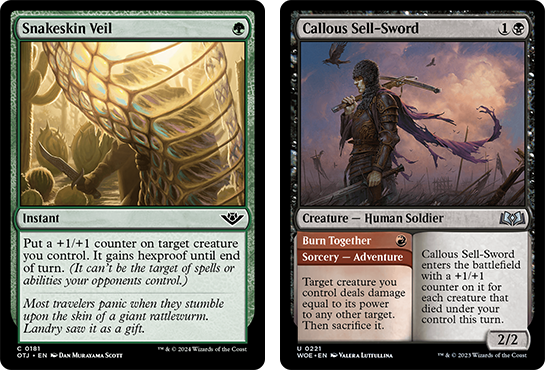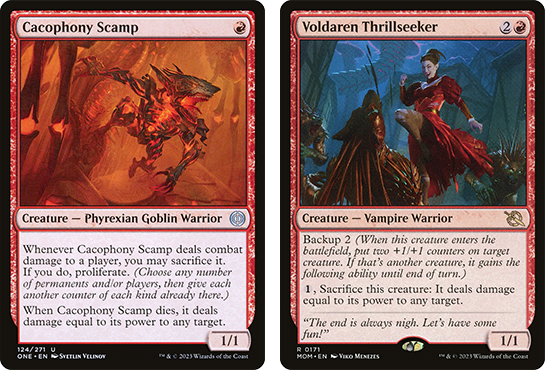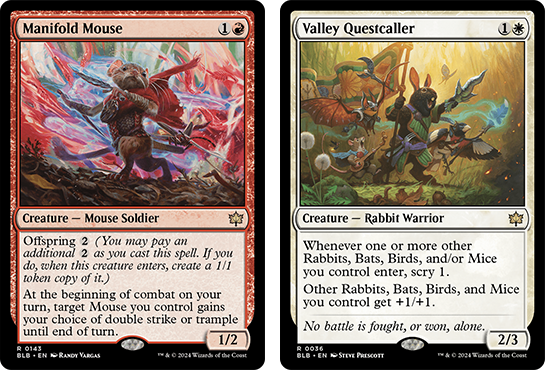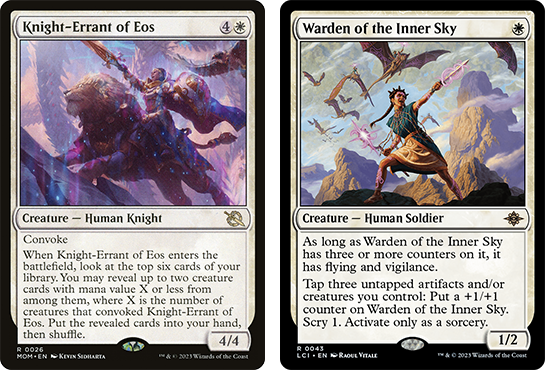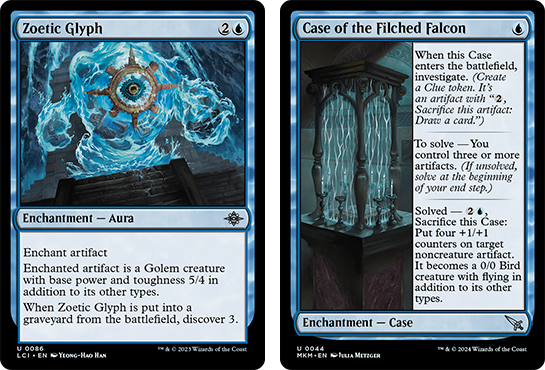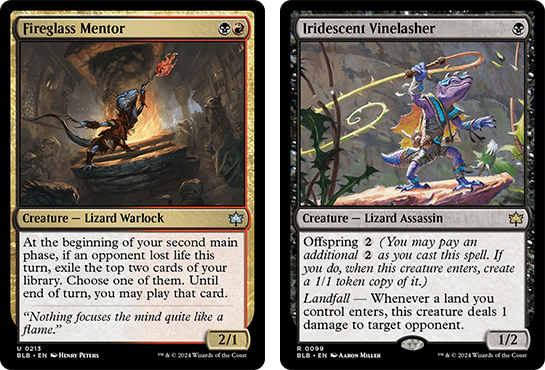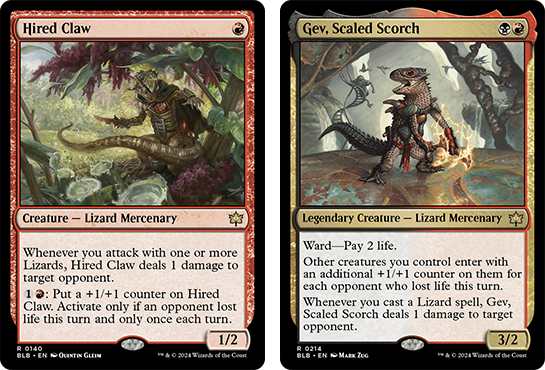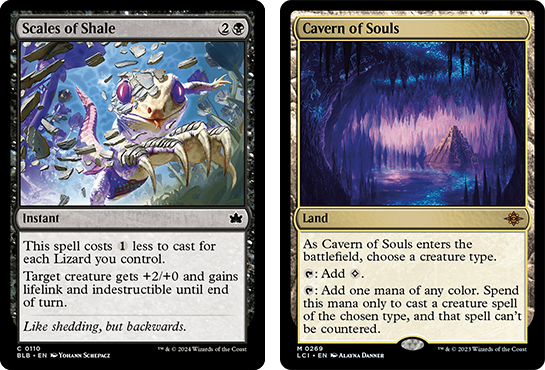Standard is in a really interesting place right now – and not least because it’s not the one I or many other people expected. The post-Bloomburrow format has begun to settle after its long-awaited rotation, and while GB Midrange and Atraxa Ramp remain top contenders, they are surrounded on all sides by hyper-aggressive aggro decks!
It’s true that aggro is often prominent in the early days of a new metagame with its fast and proactive gameplan. But with powerful anti-aggro tools like Sheoldred, Atraxa, Cut Down, and Temporary Lockdown sticking around through rotation, it seemed like a hostile climate for beatdown.
Instead, aggro players have responded by going smaller, faster, and more board-heavy than ever – not just in classic mono-red, but in a beautiful variety of decks across all five colors!
PROWESS TO IMPRESS
The largest and most ferocious family of decks is built around a core of cheap red creatures which grow larger when spells are cast – or cast on them. The valiant mechanic on Bloomburrow’s mice has added serious depth to the Gruul Prowess deck which already had a great first-string of Questing Druid, Slickshot Show-Off, and the classic Monastery Swiftspear.
Heartfire Hero and Emberheart Challenger stand out as the mice that actually crack that top tier themselves, even in a deck not wholly designed around generating valiant triggers. Emberheart Challenger is an essential engine in a deck with very low mana costs and no other repeatable way to access extra draws.
Heartfire Hero immediately becomes the #1 threat for the archetype for its tempo alone, edging out even the explosive Slickshot. Pairing it with one-mana defensive tricks like Snakeskin Veil, Shore Up or Loran’s Escape is virtually unbeatable on the play, unless the opponent is teched up with Sheoldred’s Edict or Tithing Blade.
The on-death face damage effectively reduces their clock by a turn, so even if your trick only blocks the first attempt to remove the Hero, the combination of extra +1/+1 counters and an extra swing in combat (almost certainly unblocked since they wasted the last turn’s mana) should bring them low enough to finish off with haste and burn spells.
In fact, the on-death damage ping is enough of a gamechanger to have its own singularly focused variant build: Callous Fling. Rather than preserve Heartfire Hero from removal, this deck employs Callous Sell-Sword – or more accurately, its adventure side – to proactively kill it off on your terms.
This is beneficial for a couple of reasons. One, you avoid the risk of losing Hero to exiling removal or something else which would negate the trigger damage. Two, Burn Together doubles up the death damage with its own effect. If you swing then fling in second main it’s like hitting three times in one turn – that’s really making the most of your pump spells!
If it was just Sell-Sword and Hero that might not define a new archetype, but you can throw in Cacophony Scamp and Voldaren Thrillseeker for some redundancy without losing too much power from the combo.
The deck does run a few black-producing dual lands to cast the creature side of Callous Sell-Sword, but it’s otherwise the dominant “mono-red” build of this archetype. Only the odd sideboard card like Duress, Molten Collapse, or Skulduggery might remind you there’s a second color.
The same cannot be said of our final variant, RW Mice. This takes the RG shell in the opposite direction – slightly slower, slightly more consistency and staying power.
Adding more mice to our Hero/Challenger duo lets us use some of Bloomburrow’s best typal bonuses in Flowerfoot Swordmaster, Manifold Mouse, and Valley Questcaller. It also secures some occasional bonus damage from Might of the Meek or Rockface Village – every point counts in a deck this fast!
It’s thrilling to see the Bloomburrow cards come in and set off a tidal wave of tempo decks, even with the tempo-centric UR otter cards releasing a little undercooked. But the mice aren’t the only low-casting-cost RW deck flying high in current Standard…
KNIGHTS-INERRANT
Boros Convoke is another archetype which had an established presence for itself even before rotation. In fact, this writer recalls hearing specific buzz around RW as the “best deck to not lose anything” during the lead-up to Bloomburrow.
It’s true that all the most unique and potent pieces of the plan remain, with the same devastatingly simple plan: put a lot of permanents into play turns one and two (creatures preferred) and then tap them to surge out a fast Knight-Errant of Eos and reload your hand. If no Knight-Errant is available, then your army can at least fuel triggers like Case of the Gateway Express or Warden of the Inner Sky. Sanguine Evangelist and Imodane’s Recruiter leverage a wide board in the most traditional way: racking up a bunch of bonus damage from team pump effects.
It’s an excellent “Go Wide” deck of the exact variety I discussed last week, and the only loss from rotation which slowed it down was losing the “one-drop plus artifact” opening from Voldaren Epicure. Maybe that’s a big reason so many of these decks have started turning towards blue, either moving into Jeskai or completely pivoting to UW. These builds just replace Epicure with Spyglass Siren, while also gaining access to Protect the Negotiators or Negate out of the side.
The full UW build is even spicier – if you can believe that! Instead of using the Siren’s map token as a target for Gleeful Demolition, they run Zoetic Glyph and Case of the Filched Falcon to produce a singly chunky threat. The lethally-cute combination of Regal Bunnicorn and Mockingbird can lead to surprise wins through the air, while Steel Seraph is at its best surrounded by larger individual bodies. Subterranean Schooner slots in perfectly as another way to utilize our tiny-bodied creatures and apply even more life pressure early in the game.
This focus on combat damage, along with continued use of the convoke mechanic, are what separate this archetype from the WB builds centered on sacrifice costs and noncreature permanents. Those are also very well-positioned and share many advantages with Convoke, but our final deck to discuss is actually…
KING LIZARD GETS YOUR GIZZARD, WIZARD
A second helping of Bloomburrow creature typal excellence, thanks primarily to Fireglass Mentor and Iridescent Vinelasher.
Their combination of direct damage and significant draw power at a low, low casting cost stand out as head-and-shoulders above their mouse equivalents – at least in terms of speed. Thought-Stalker Warlock is a neat follow-up to the format-defining Deep-Cavern Bat, while Laughing Jasper Flint offers another “draw engine” in case the Mentors aren’t sticking.
Some builds include Valley Flamecaller main or side: the synergy with Hired Claw and Iridescent Vinelasher is excellent, but any extra three-drops might be stretching the curve. Shota Yasooka’s successful build from early this month kept it simple: all four-ofs, with no Flamecaller slots and unconditional black removal.
But other players have since made room for it and Vadmir, New Blood to further profit from your Vinelashers’ many crimes! The most common swaps are the 4th copies of Gev and Thought-Stalker Warlock, or moving black removal to the side if you want the closing power of Shock and Lightning Strike. Urabrask’s Forge, Duress and Glistening Deluge are key SB pieces, while Scales of Shale makes for a spicy counter to targeted removal or other aggro decks that might race you.
The last little push of viability here comes from the land-base: not only does your high lizard count unlock the two best Bloomburrow Villages, but also a full four Cavern of Souls to ensure you curve out uninterrupted against pesky blue decks.
OUT THERE, IT’S THE QUICK AND THE EXILED
Looking at the meta as a whole, I find myself with mixed feelings on this parade of hyper-aggressive archetypes. On the one hand, it’s genuinely awesome to see so many different approaches to creature aggro, especially with such a full variety of colors and key cards among them. All of these decks are fun to play, with the tiny mana costs ensuring big decision points early in the game and the inherent race-against-the-clock tension that’s part of being the beatdown.
On the other hand, I can’t really buy that this wholesale shift towards the bottom of the mana-curve is an isolated trend. It seems that dominant creature removal plus sweepers like Sunfall and Temporary Lockdown have had a polarizing effect on the meta. Either you play those answers in a high-inevitability shell like Atraxa Ramp or Token Control, or you try to go even lower, even faster to make sure you get the key damage done before the hammer drops.
It’s not such a bad set of matchups to have in the format, but it does lead to displacement and disparity for any deck which would naturally land in the middle – even to include slower, more even-curved creature decks like RG Dinosaurs. Hopefully those decks will find their own day in the sun soon, but for now I’d recommend joining the hordes of prowess heroes and getting stuck into combat!

Tom’s fate was sealed in 7th grade when his friend lent him a pile of commons to play Magic. He quickly picked up Boros and Orzhov decks in Ravnica block and has remained a staunch white magician ever since. A fan of all Constructed formats, he enjoys studying the history of the tournament meta. He specializes in midrange decks, especially Death & Taxes and Martyr Proc. One day, he swears he will win an MCQ with Evershrike. Ask him how at @AWanderingBard, or watch him stream Magic at twitch.tv/TheWanderingBard.

